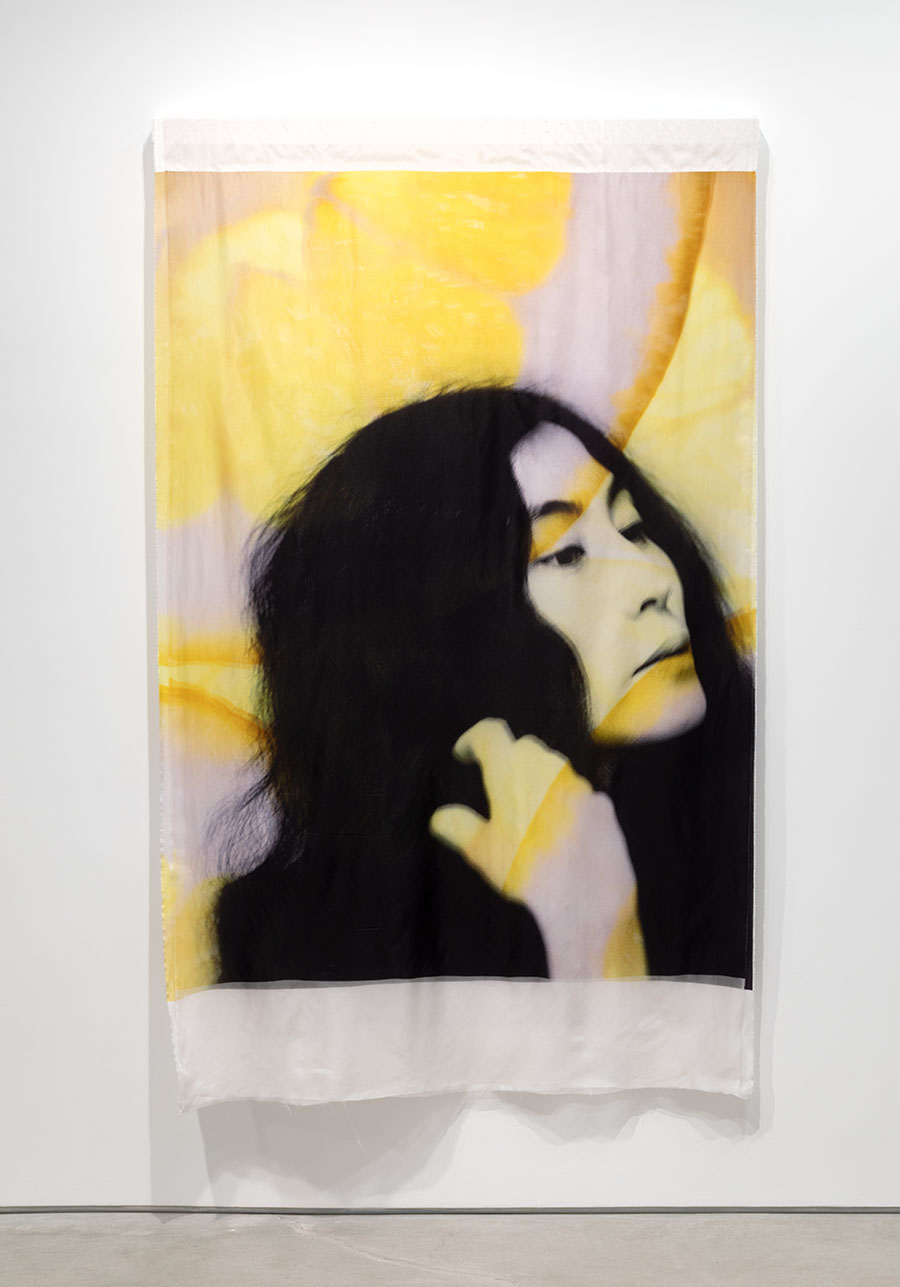For T. J. Wilcox, the Spectrum is a Queer Mirror
At Gladstone Gallery, New York, the colourful lives of gay icons comprise a cultural self-portrait
At Gladstone Gallery, New York, the colourful lives of gay icons comprise a cultural self-portrait

A bar of spectral light splices across an otherwise dark, unlit floor. No more than a few centimetres in width, but encompassing the entire field of visible colour – from red to violet – this bar is a sliver of T. J. Wilcox’s resplendent, six-part, silent film, Spectrum (2020), the titular work and centrepiece of his new exhibition. Projected onto a massive panoramic screen hung in Gladstone’s largest space, Wilcox’s film uses the colour field as a provocation to enact self-portraiture. For Wilcox, a gay man in his 50s, the act of looking at oneself – that is, of reflecting – means finding oneself embedded within a bounty of rich cultural and social relations; whether that be the gloriously cluttered red boudoir of fashion photographer Diana Vreeland or the green carnation that once entrapped Oscar Wilde. If Johann Wolfgang von Goethe was right in his Theory of Colours (1810) – that the eye does not see single colours alone but, instead, sees the sum of all visible colours in the spectrum – then the film and six new prints that comprise ‘Spectrum’ ambitiously do both, locating self-portraiture in the process of recovering and making present the chromatic details of a cultural past.

The delectation in watching a Wilcox film lies partly in the fact that there is often nothing in it you haven’t seen before. Take, for instance, In the Air (2013), his filmic installation for the Whitney Museum of American Art, for which Wilcox sutured 60,000 stills of New York, taken from his rooftop in Manhattan, to a series of vignettes that refer to various queer personages, so as to build a looping composite of site-study and self-examination: looking out as a way of looking in. As with Spectrum, In the Air used sculptural space in its mode of presentation: the film was projected onto a circular cinematic screen, immersing its viewers in an endless panoramic space, like a globular rendering of Andy Warhol’s slow ode to the phallus, Empire (1964). Spectrum offers a paratactic arrangement of material, wherein six looping narratives play next to one another. The first contains archival footage of Vreeland, who recalls having once received a bouquet of red camellias from a ‘big-time show person’, and then constructing what she calls a ‘garden of hell’ inspired by it: a whole apartment draped, cushioned and carpeted in red. The second depicts the mating and migration rituals of the monarch butterfly. The third captures Wilcox’s hands as they attempt Yoko Ono’s instructive Mend Piece from her book Grapefruit (1964). The latter three segments go further back in time: narratives of Wilde, the 19th-century ballerina Marie Taglioni, and the Ancient Greek myth of Apollo and Hyacinth are revivified by way of monochrome etching, montage and title cards. As much as these vignettes depict the familiar and revel in queer mythos and artefact, most affecting is Wilcox’s understated, vibrant manipulation of his materials. Vreeland’s matte-red lips register with maximal saturation; Wilde’s gay friends appear in gaudy seafoam suits and trousers. Colour becomes a signifying tool, which highlights our own penchant for projection: the act of identifying, or making familiar.

Each subject of Wilcox’s films corresponds to one of six new multi-ply prints on silk (all 2020), which are on display between two smaller galleries. Elaborating Wilcox’s specific cinematic technique, his silks are palimpsests, wherein each chosen image – Vreeland’s wall, Ono’s face – is printed onto individual sheets at differing levels of saturation, which then hang on top of one another. Pinned against the walls, the images occasionally blur out of focus, recasting these familiar subjects as sprightly bursts of shape and colour.
Main image: T. J. Wilcox, Spectrum, 2020, installation view. Courtesy: the artist and Gladstone Gallery, New York and Brussels

























